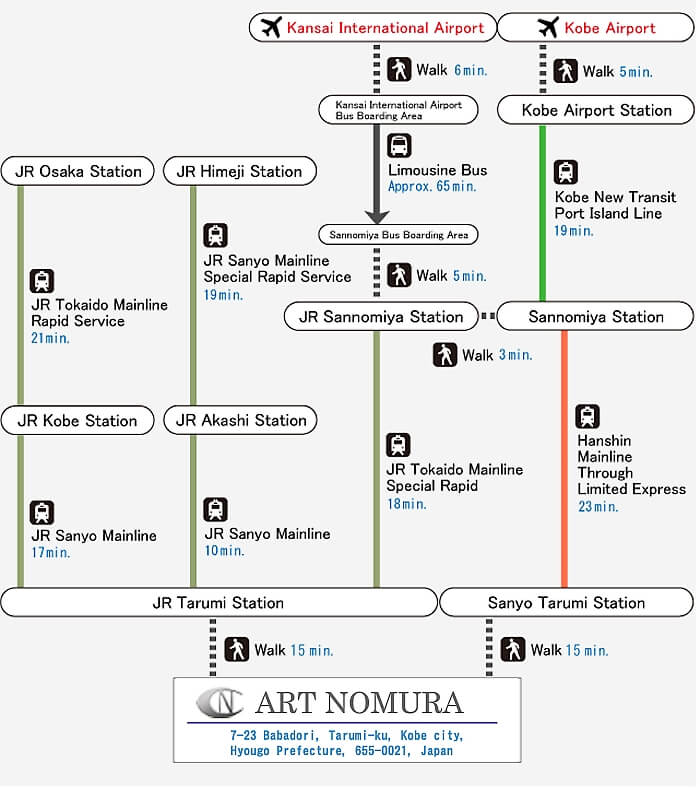Access Information
How to Get to JR Tarumi Station
From Kōbe Airport
Take Kōbe New Transit to “Sannomiya.” Transfer to the JR Kōbe Line Rapid Service and get off at Tarumi.
From Kansai International Airport
Go to “Sannomiya” by limousine bus (approx. 65 min). Transfer to the JR Kōbe Line Rapid Service and get off at Tarumi.
From the Osaka area
Take JR Kōbe Line Special Rapid Service to Kōbe. At Kōbe, transfer to the Rapid Service and get off at Tarumi.
From the Himeji area
Take the JR Kōbe Special Rapid Service to Akashi. At Akashi, transfer to the Rapid Service and get off at Tarumi.
By Walk From JR Tarumi Sta. to ART NOMURA
ART NOMURA / Nomura Bijutsu
ADDRESS
7-23 Babadōri, Tarumi-ku, Kōbe city, Hyogo Prefecture, 655-0021, Japan
By Taxi From JR Tarumi Sta. to ART NOMURA
It is best to take a taxi from the east exit of JR Tarumi Sta. because it’s nearer and cheaper.
(Approx. JPY 680 for 5 minutes ride)
Please tell a taxi driver to go to “Nomura Bijutsu” (bijutsu means art in Japanese).
By Car
From the Osaka area
From the Hanshin Expressway Kōbe Line going west, take the Daini Shinmei Dōro exit. From the Myōdani Interchange, take the immediate left at the “Myōdani Inter Kita” three-way intersection, then turn left at “Myōdani-Chō,” which is the second traffic signal. Go straight the way until you get to the 8th traffic light. Turn right at the light, then you will find ART NOMURA on your left.



